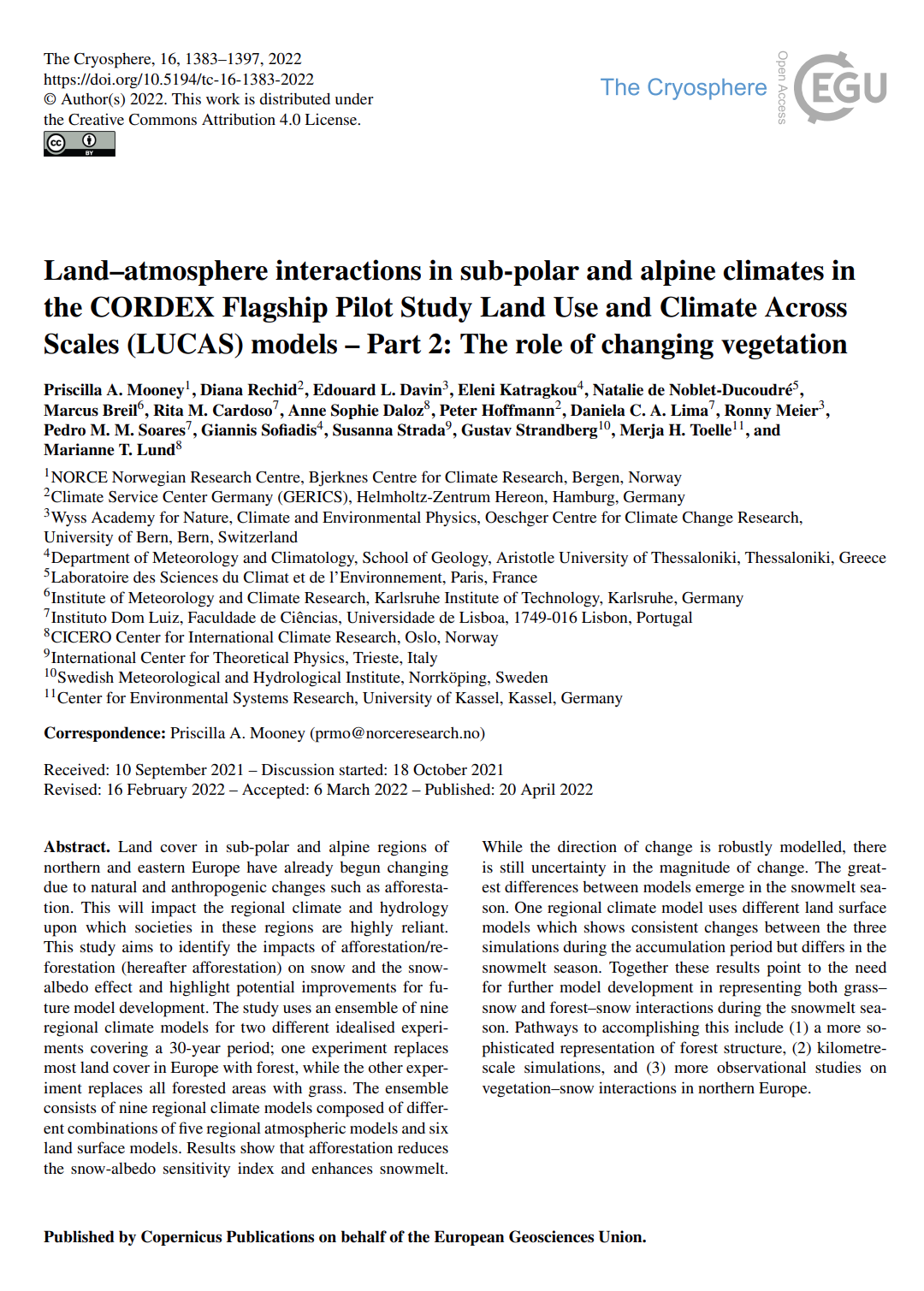Land cover in sub-polar and alpine regions of northern and eastern Europe have already begun changing due to natural and anthropogenic changes such as afforestation. This will impact the regional climate and hydrology upon which societies in these regions are highly reliant. This study aims to identify the impacts of afforestation/reforestation (hereafter afforestation) on snow and the snow-albedo effect and highlight potential improvements for future model development. The study uses an ensemble of nine regional climate models for two different idealised experiments covering a 30-year period; one experiment replaces most land cover in Europe with forest, while the other experiment replaces all forested areas with grass. The ensemble consists of nine regional climate models composed of different combinations of five regional atmospheric models and six land surface models. Results show that afforestation reduces the snow-albedo sensitivity index and enhances snowmelt. While the direction of change is robustly modelled, there is still uncertainty in the magnitude of change. The greatest differences between models emerge in the snowmelt season. One regional climate model uses different land surface models which shows consistent changes between the three simulations during the accumulation period but differs in the snowmelt season. Together these results point to the need for further model development in representing both grass–snow and forest–snow interactions during the snowmelt season. Pathways to accomplishing this include (1) a more sophisticated representation of forest structure, (2) kilometre-scale simulations, and (3) more observational studies on vegetation–snow interactions in northern Europe.

